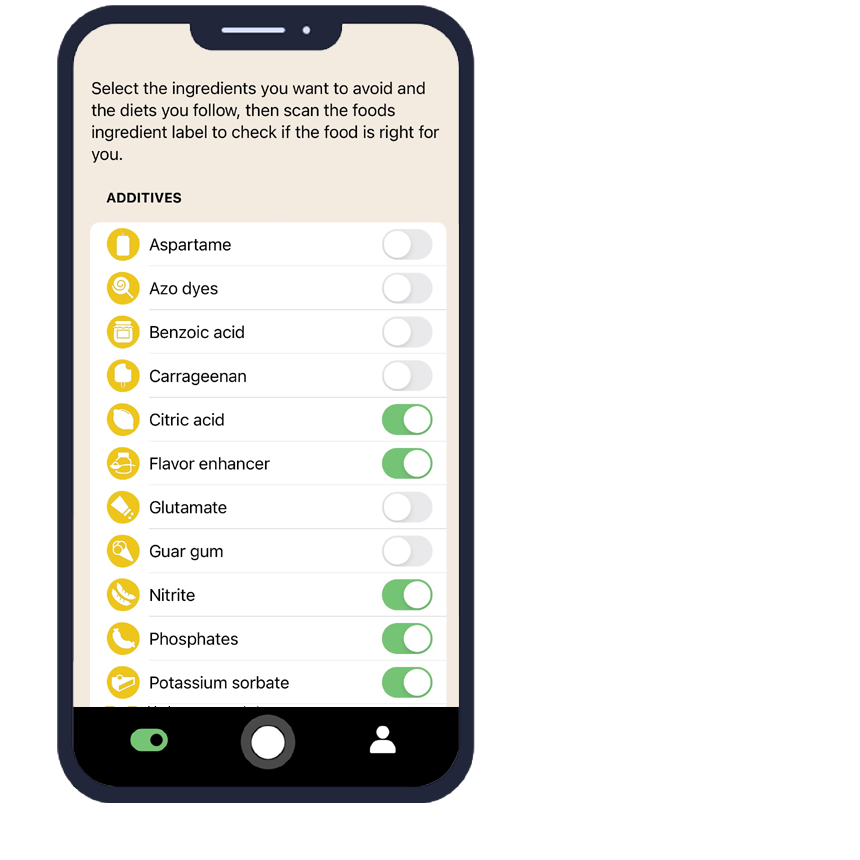Everything You Need to Know About Mustard and How AI Eat This Can Help
Mustard is one of the 14 major allergens recognized by food safety authorities worldwide, yet many consumers struggle to identify it in processed foods. This common ingredient appears in countless products beyond the obvious condiments, making it challenging for those with mustard allergies or intolerances to maintain a safe diet. The AI Eat This app revolutionizes how consumers identify mustard and other problematic ingredients by instantly scanning food labels in any language, providing peace of mind for health-conscious individuals managing dietary restrictions.
What Is Mustard and Where Is It Used?
Mustard refers to seeds from plants in the Brassicaceae family, commonly used as a spice, condiment, and food additive. The three main types include white mustard (Sinapis alba), brown mustard (Brassica juncea), and black mustard (Brassica nigra). Food manufacturers utilize mustard in various forms, including whole seeds, ground powder, oil, and protein extracts.
This versatile ingredient extends far beyond traditional condiments. Mustard appears in salad dressings, marinades, processed meats, curry powders, and spice blends. Many consumers don't realize that mustard can be found in unexpected products like flavored snacks, soups, and even some baked goods.
Common Foods Containing Mustard
- Condiments and sauces (ketchup, mayonnaise, barbecue sauce)
- Processed and cured meats (sausages, deli meats, bacon)
- Salad dressings and vinaigrettes
- Indian and Asian cuisine dishes
- Pickled vegetables and relishes
- Seasoning blends and curry powders
- Some breads and baked products
Is Mustard Safe? What Does the Research Say?
For most people, mustard consumption is completely safe and can even provide nutritional benefits. The FDA, EFSA, and WHO recognize mustard as safe for general consumption. Mustard seeds contain beneficial compounds including omega-3 fatty acids, selenium, and various antioxidants that may support overall health.
However, mustard safety becomes a serious concern for individuals with mustard allergies. The Mayo Clinic notes that mustard allergies can cause reactions ranging from mild symptoms like hives to severe anaphylaxis. Unlike some food allergies that children may outgrow, mustard allergies typically persist into adulthood.
Regulatory Approvals and Guidelines
Food safety authorities worldwide mandate clear mustard labeling due to its allergenic potential. In the United States, while mustard isn't among the top 9 allergens requiring special labeling, manufacturers often voluntarily disclose its presence. The European Union requires mandatory mustard labeling as one of the 14 major allergens.
Risks for Specific Groups
People with diagnosed mustard allergies face the highest risk and must completely avoid all mustard-containing products. Those with cross-reactive allergies to other Brassicaceae family plants (like cabbage or broccoli) may also experience reactions. Additionally, individuals following certain religious dietary restrictions may need to avoid mustard-containing products depending on processing methods.
How Does AI Eat This Help You Avoid Mustard?
The AI Eat This app transforms mustard avoidance from a tedious label-reading task into a simple scan-and-go process. Users simply point their smartphone camera at any food product's ingredient list, and the app's advanced artificial intelligence instantly identifies mustard and hundreds of other ingredients in over 100 languages.
The app's personalized filter system allows users to set specific dietary restrictions, including mustard avoidance. When scanning products, the app immediately alerts users if mustard is present, even when listed under alternative names or in different languages. This feature proves invaluable for travelers or when shopping for international foods.
Beyond basic ingredient identification, AI Eat This provides detailed information about mustard's various forms and alternative names. The app recognizes terms like "Sinapis alba extract," "mustard flour," and regional variations, ensuring comprehensive protection for users with dietary restrictions.
Who Should Avoid Mustard?
Individuals with diagnosed mustard allergies must strictly avoid all mustard-containing products to prevent potentially serious allergic reactions. Those experiencing unexplained symptoms after eating processed foods should consult healthcare providers about possible mustard sensitivity or intolerance.
People with multiple food allergies often find mustard avoidance challenging due to its prevalence in processed foods. Cross-contamination during manufacturing can also pose risks for highly sensitive individuals. Some people choose to avoid mustard for personal dietary preferences or when following elimination diets to identify food triggers.
Tips for a Mustard-Free Diet
Successfully avoiding mustard requires vigilance and proper tools. Always read ingredient labels carefully, as mustard can appear under various names including botanical terms and regional variations. When dining out, inform restaurant staff about your mustard allergy, as many sauces and seasonings contain this ingredient.
Focus on whole, unprocessed foods when possible, as these naturally contain fewer hidden ingredients. When purchasing packaged foods, look for "may contain" warnings, which indicate potential cross-contamination risks. Keep emergency medications prescribed by your healthcare provider readily available if you have a severe mustard allergy.
Utilize technology like the AI Eat This app to streamline your shopping experience and reduce the risk of accidentally consuming mustard. The app's database continuously updates to include new products and formulations, ensuring you have the most current information available.
Conclusion
Managing mustard avoidance doesn't have to be overwhelming when you have the right tools and knowledge. Understanding where mustard commonly appears in foods and recognizing its various forms empowers consumers to make informed dietary choices. The AI Eat This app simplifies this process by providing instant, accurate ingredient identification that helps users with dietary restrictions shop confidently and safely. Whether you're managing a mustard allergy, following specific dietary guidelines, or simply want to know what's in your food, this innovative technology makes healthy eating more accessible than ever. Download AI Eat This? for free testing today and take control of your dietary health with confidence!

70 filters
With over 70 filters, you can easily avoid certain ingredients and follow your dietary preference.

Paleo

Pescetarian

Ultra-processed food

Vegan







































































